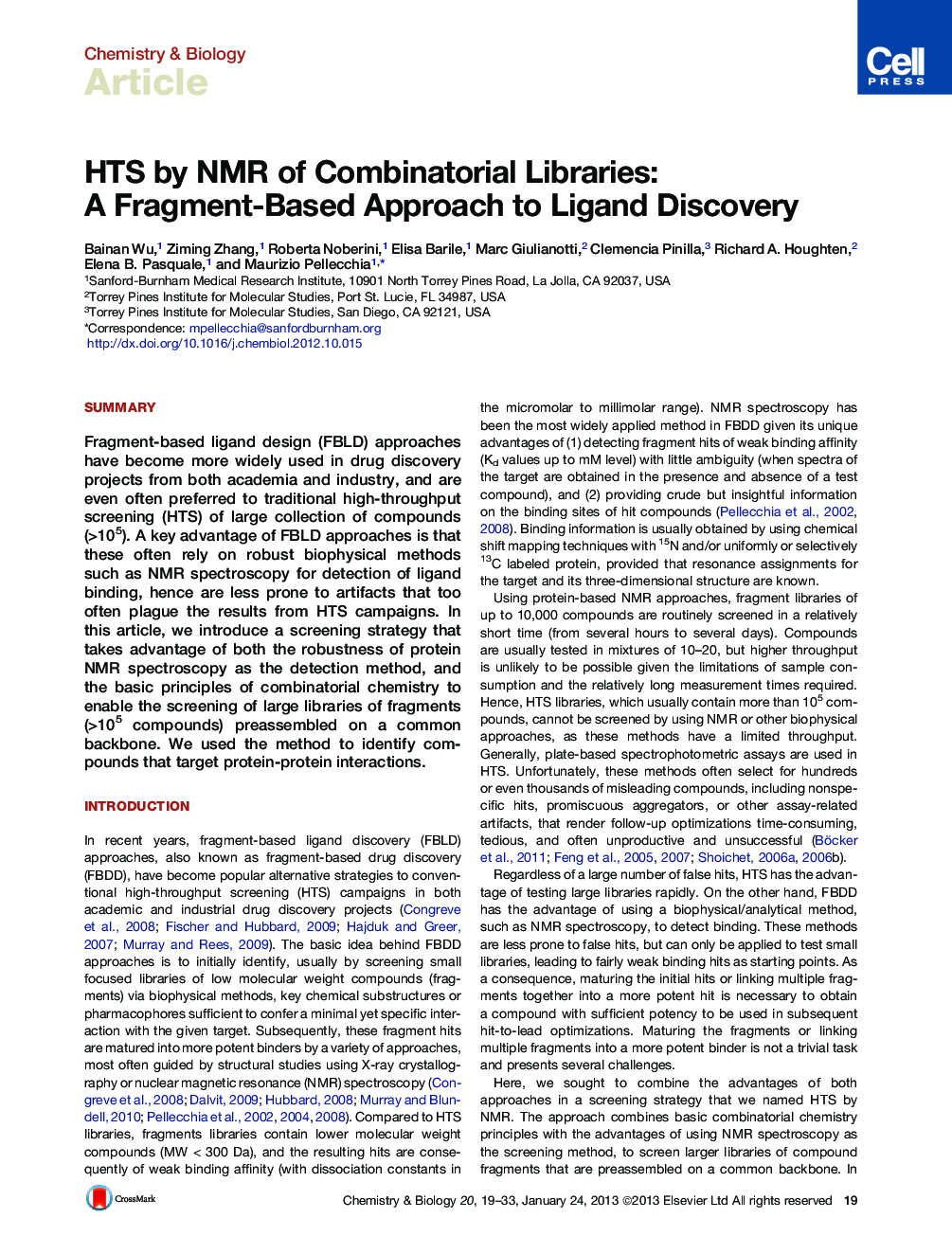| Article ID | Journal | Published Year | Pages | File Type |
|---|---|---|---|---|
| 1391221 | Chemistry & Biology | 2013 | 15 Pages |
SummaryFragment-based ligand design (FBLD) approaches have become more widely used in drug discovery projects from both academia and industry, and are even often preferred to traditional high-throughput screening (HTS) of large collection of compounds (>105). A key advantage of FBLD approaches is that these often rely on robust biophysical methods such as NMR spectroscopy for detection of ligand binding, hence are less prone to artifacts that too often plague the results from HTS campaigns. In this article, we introduce a screening strategy that takes advantage of both the robustness of protein NMR spectroscopy as the detection method, and the basic principles of combinatorial chemistry to enable the screening of large libraries of fragments (>105 compounds) preassembled on a common backbone. We used the method to identify compounds that target protein-protein interactions.
Graphical AbstractFigure optionsDownload full-size imageDownload high-quality image (245 K)Download as PowerPoint slideHighlights► HTS by NMR combines protein NMR and combinatorial chemistry to screen large libraries ► The approach is best suited to identify ligands to protein-protein interactions ► The method enables a rapid assessment of the druggability of a given target ► We applied the method to a test case and to derive potent and selective EphA4 ligands
